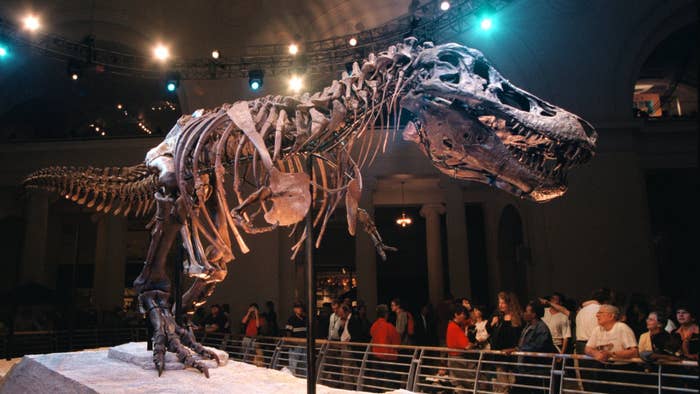
Scientists in Patagonia, Argentina have discovered a new dinosaur named Llukalkan aliocranianus in the local Mapuche language, or the “one who causes fear.”
The experts’ findings were published on Tuesday, revealing the large meat-eating dinosaur was horned, 16 feet long, had tiny fingers, and lived in South America 85 million years ago. It also weighed between one to five tons, a size that is slightly smaller than an adult elephant. It was likely a formidable predator, with its large skull and a powerful bite.
The findings also indicate it had better hearing than other dinosaurs in the abelisauridae family, so it was probably a more skilled hunter. It was alive during the Cretaceous period, the period before the dinosaurs were extinguished.
“A peculiarity of this dinosaur is that it has cavities in the ear area that other abelisaurids did not have, which could have given this species different auditory capacities, possibly a greater hearing range,” Federico Gianechini, a paleontologist at the National University of San Luis, Argentina, and one of the lead authors of the study, told CNN. “This, together with its keen sense of smell, would have given great capabilities as a predator to this species.”
The Llukalkan is similar to the Tyrannosaurus rex in that both were two-legged and had very short arms; however, the Llukalkan was medium-sized in comparison to the T. rex, which was much larger.
“These dinosaurs were still trying out new evolutionary pathways and rapidly diversifying right before they died out completely,” Dr. Ariel Méndez of the Patagonian Institute of Geology and Palaeontology and a study co-author said in a press release.
The creature’s skull was close to another carnivorous dinosaur, the Viavenator exxoni, an unusual occurrence. “Llukalkan was a little smaller than Viavenator, although, if they lived together, they surely shared the same ecological niche and fed on the same prey, so they would have competed with each other and—why not—even eaten each other,” Gianechini told Reuters.

